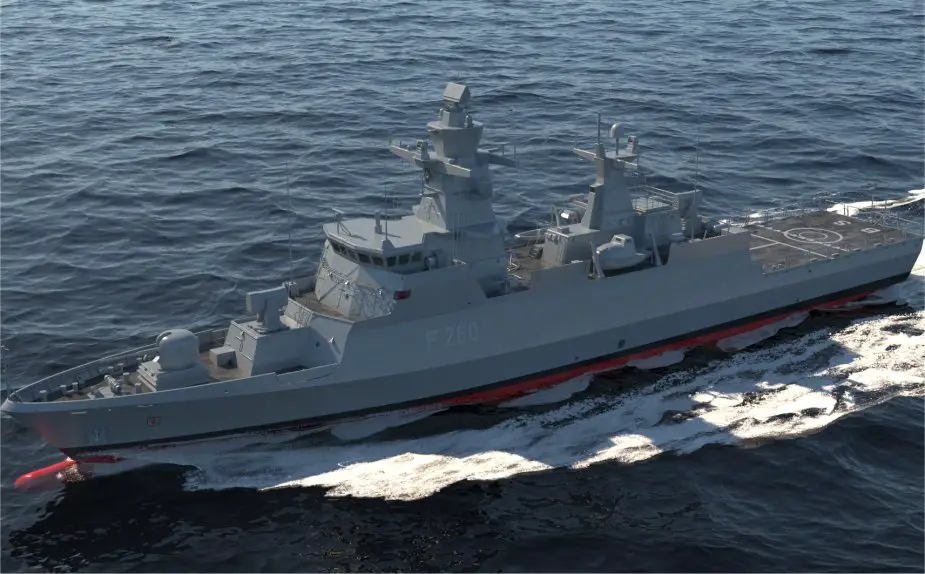Breaking news
Hensoldt modernises naval radars of two K130-class corvettes of the German Navy.
According to a press release published on February 15, 2021, Sensor solutions provider HENSOLDT is modernising the TRS-3D radars of two K130-class corvettes of the German Navy, as well as an associated shore facility. An order for corresponding electronic components was placed by the Federal Office of Bundeswehr Equipment, Information Technology and In-Service Support (BAAINBw). The replacement deliveries will take place in the course of this year.
Follow Navy Recognition on Google News at this link
 Braunschweig (F260) is the lead ship of the Braunschweig-class corvette of the German Navy (Picture source: Hensoldt)
Braunschweig (F260) is the lead ship of the Braunschweig-class corvette of the German Navy (Picture source: Hensoldt)
The TRS-3D is a three-dimensional multimode ship radar for air and sea surveillance, which can correlate the position and movement data of targets with the HENSOLDT identification system MSSR 2000 I and thus improve the automatic identification of ships and aircraft.
The TRS-3D is the global market leader in its class with more than 60 radars in service with navies and coastguards worldwide. In addition to K130 corvettes, vessels equipped with it include the US Coast Guard's National Security Cutters, a number of US Navy Littoral Combat Ships, as well as ships of the Finnish Navy and the Norwegian Coast Guard.
The K130 Braunschweig class (sometimes Korvette 130) is Germany's newest class of ocean-going corvettes.
Originally, the K130 class was supposed to be armed with the naval version of the Polyphem missile, an optical fiber-guided missile with a range of 60 km (37 mi), which at the time was under development. The Polyphem program was cancelled in 2003 and instead the designers chose to equip the class with the RBS-15. While the RBS-15 has a much greater range of 250 km (160 mi), the current version mounted on the ships, Mk3, lacks the ECM-resistant video feedback of the Polyphem. The German Navy has ordered the RBS-15 Mk4 in advance, which will be a future development of the Mk3 with increased range —400 km (250 mi)— and a dual seeker for increased resistance to electronic countermeasures. The RBS-15 Mk3 has the capability to engage land targets.



























